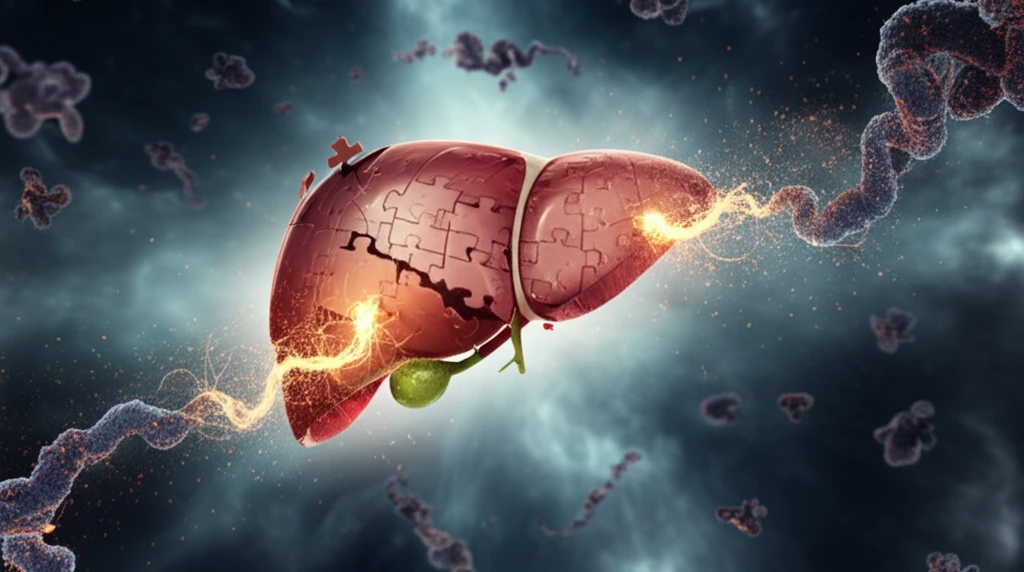
Unlocking the Mystery of Hepatitis C: How IL-17F Could Be the Key to Early Detection and Treatment
"New research suggests that Interleukin-17F (IL-17F) could serve as a crucial biomarker in identifying liver fibrosis and hepatocellular carcinoma (HCC) in hepatitis C patients, paving the way for earlier interventions."
Hepatitis C is a global health concern, affecting millions worldwide. While treatments have improved, early detection remains crucial to preventing severe liver diseases like fibrosis, cirrhosis, and hepatocellular carcinoma (HCC), a type of liver cancer. The progression from initial infection to these advanced stages can take decades, offering a window for intervention if the disease is caught early.
Recent research has focused on identifying biomarkers that can indicate the severity of liver damage in hepatitis C patients. Among these, Interleukin-17F (IL-17F), a protein involved in immune responses, is emerging as a promising candidate. IL-17F shares similarities with another well-studied protein, IL-17A, but its specific role in chronic liver diseases has been less clear.
A new study published in Infectious Agents and Cancer sheds light on the potential of IL-17F as a valuable marker for liver disease progression in hepatitis C patients. The study investigates the relationship between IL-17F levels and the severity of liver fibrosis and the presence of HCC, offering new insights into early detection and potential treatment strategies.
IL-17F: A New Hope for Hepatitis C Detection

The study involved analyzing liver tissue samples from hepatitis C patients, both with and without HCC. Researchers used advanced techniques like quantitative PCR and immunohistochemistry to measure the expression of inflammatory cytokine genes, including IL-17F. Additionally, they analyzed serum samples from 250 hepatitis C patients who had not yet undergone interferon treatment, using a method called enzyme-linked immunosorbent assay (ELISA) to measure cytokine concentrations.
- Elevated IL-17F in Severe Fibrosis: Patients with more advanced stages of liver fibrosis showed significantly higher concentrations of IL-17F in their serum.
- Increased IL-17F in HCC Tissues: In patients with hepatitis C-associated HCC, IL-17F expression was markedly higher in tumor tissues compared to non-tumor tissues. This elevation was observed at both the mRNA and protein levels.
- IL-17F Outperforms IL-17A: The study suggests that IL-17F may be a more reliable marker than IL-17A, a related cytokine, in tracking the progression of chronic fibrosis and HCC development in hepatitis C patients.
The Future of Hepatitis C Management: A Personalized Approach
The study's findings pave the way for further research into the precise role of IL-17F in the development of liver fibrosis and HCC. Understanding how IL-17F contributes to these processes could lead to the development of targeted therapies to prevent or reverse liver damage. Furthermore, IL-17F could be incorporated into routine monitoring protocols for hepatitis C patients, enabling a more personalized and proactive approach to disease management. This research marks a significant step forward in the fight against hepatitis C and its devastating consequences.
